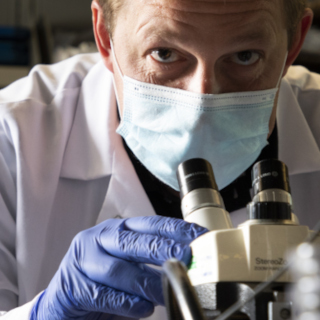Institutional Biosafety Committee (IBC)
The Institutional Biosafety Committee (IBC) at the University of Montana (UM) reviews, approves and maintains a record of all research and teaching activities by faculty, staff and students that involves hazardous biological agents, toxins, human cell lines, and recombinant or synthetic DNA molecules. The IBC ensures that all activities involving these materials and the facilities used to conduct such research are in compliance with current external regulations and applicable UM policies.
The IBC advises the vice president for research and recommends policies to guide principal investigators (PIs) in carrying out UM’s biosafety program for the acquisition, use, training, transfer, storage, disposal, and emergency response procedures for good biological safety practice emphasizing protection of personnel, the general public and the environment. The IBC functions to discharge UM’s obligations and responsibilities as outlined in current governmental requirements, including those described in the National Institutes of Health (NIH) Guidelines, the Centers for Disease Control and Prevention (CDC) Guidelines, Occupational Health & Safety Administration (OSHA) Regulations, and other requirements that overlap with or are reviewed by other UM Committees [e.g., Human Subjects (IRB), Institutional Animal Care and Use Committee (IACUC), Radiation Safety]. To this end, the IBC shall assist PI’s in meeting these responsibilities.
Contact Biosafety Officer Linda Hicks (IBC@mso.umt.edu) for further information.
Quick Navigation:
- Biosafety Manual
- Bloodborne Pathogens
- Biosafety in Microbiological and Biomedical Laboratories (BMBL) (6th ed)
- IBC Charter
- Forms and Applications
- Human Cells
- Hazardous Biological Agents
- IBC Members
- Recombinant or Synthetic DNA Molecules
- Shipping Manual
Research activities and agents regulated by the IBC include:
Hazardous Biological Agents
- Infectious/pathogenic agents classified in risk groups 2 and 3 (bacterial, fungal, parasitic, viral, rickettsial or chlamydial) agents by:
- Other agents with potential for causing disease in humans, animals, or plants.
- The Animal and Plant Health Inspection Service (APHIS) of USDA has published a list of regulated plant pests. A Memorandum of Understanding and Agreement (MUA) is required if you are working with or in possession of any of these plant pathogens/pests.
- APHIS also has developed a list of regulated animal and plant pathogens in response to the Agricultural Bioterrorism Protection Act of 2002. Possession of any of the agents published in the Federal Register also require an MUA and notification of the US Secretary of Agriculture. Further information about their Regulated Organism and Soil Permits is found on the USDA's site.
Recombinant or Synthetic DNA Molecules*
- NIH Guidelines for Research Involving Recombinant or Synthetic DNA Molecules
- Molecules which are constructed outside living cells by joining natural or synthetic DNA segments of DNA molecules that can replicate in a living cell or,
- DNA molecules that result from the replication of those described in "1" above.
*ALL recombinant or synthetic DNA work be registered with the IBC, EVEN IF IT IS EXEMPT from NIH Guidelines.
Gene Therapy
- Delivery of exogenous genetic material (DNA or RNA) to somatic cells for the purpose of modifying those cells.
Human Cells
- All human cell lines, tissues and blood products will be handled under at least BSL2 containment.
- Labs working with primary human cell isolates, tissues or blood products will be offered hepatitis B vaccination and must submit a blood-borne pathogen plan in the IBC application.
